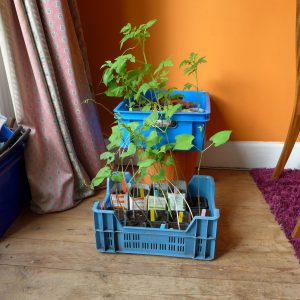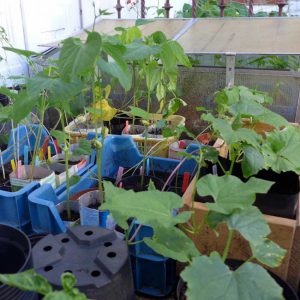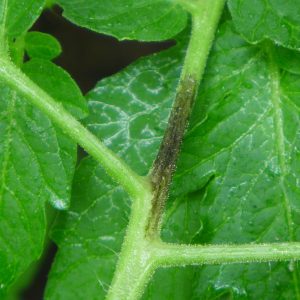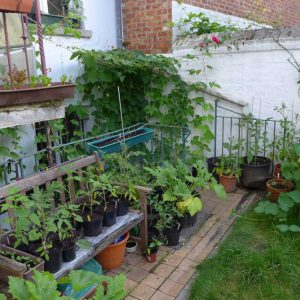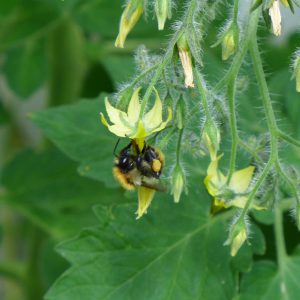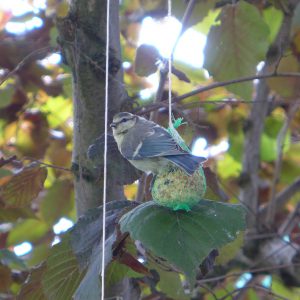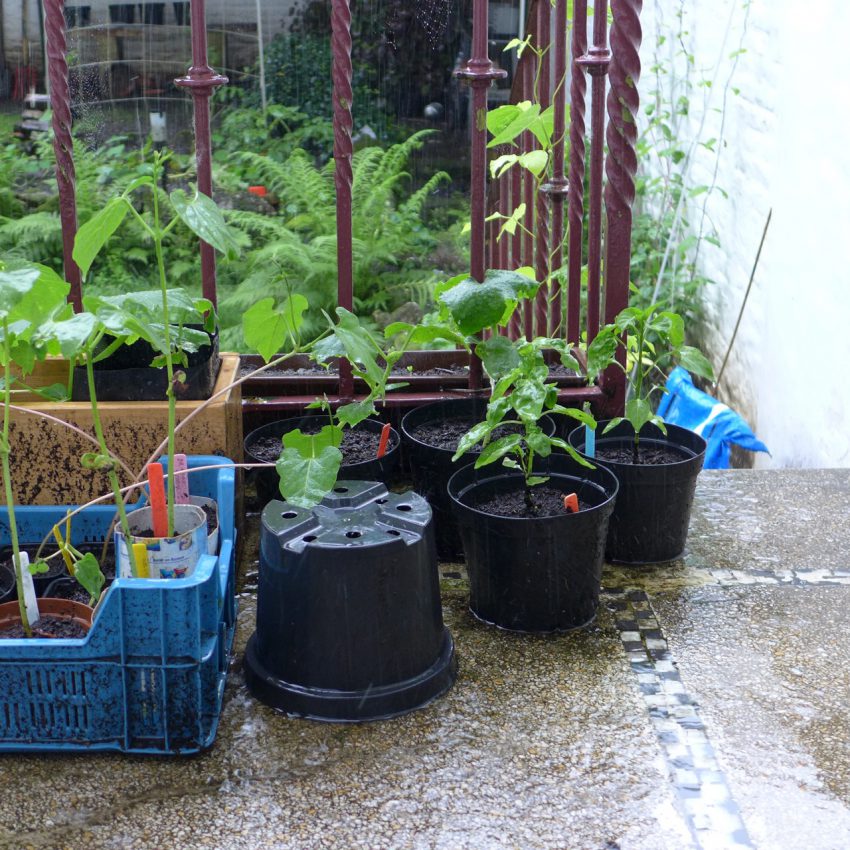
It is official. Last month was the wettest June recorded in Belgium since records began in 1833 (). With 24 days of heavy rain this central month in the gardening season was what gardeners call a wash out. It is possible this author picked the wrong year to start a gardening diary.
In an ideal world June would see the plants started indoors in April and May outside in the garden enjoying the first warm days of summer. The whole hardening off process for young plants was seriously delayed and many became long and stringy from being kept in containers too long.
For the tomatoes this extreme weather event brought “early blight.” This disease thrives in wet conditions and causes severe damage to leaves and stems on the plants, eventually killing the plants. With half the plants destroyed and the remainder cut back it was not a good start to the tomato season.
Gardeners are resilient people. Other crops in the garden managed under the deluge and tomatoes grown in containers suffered less. Heavy leaf plants such as beans and cucumbers almost thrived in the wet conditions. Some salads and herbs were stunted by the conditions but should recover.
If annoying for gardeners, give a thought for local wildlife. Bees emerging from hibernation and preparing to nest cannot forage in wet conditions. Small birds with young in the nest are similarly restricted. The effects of this extreme weather are hard to predict on local wildlife but they are not good.
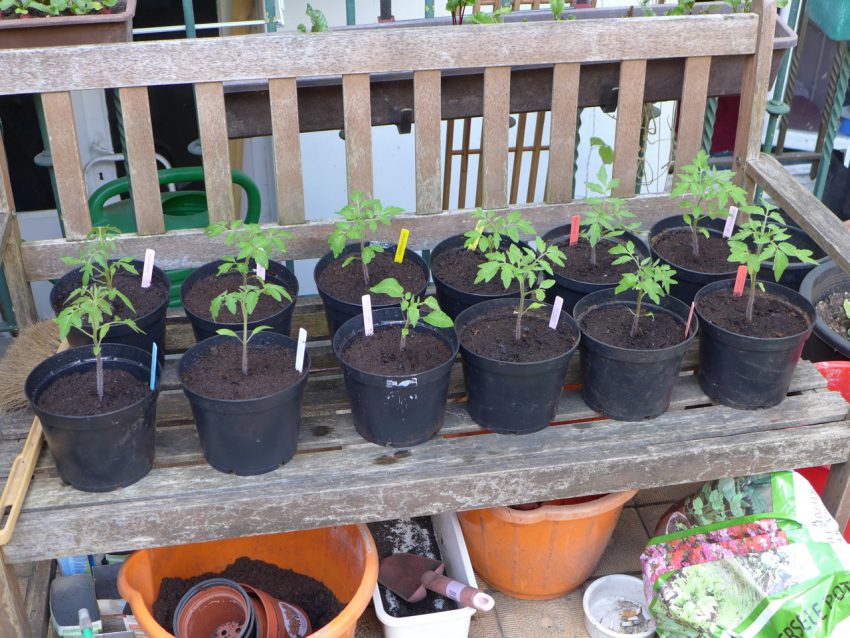
When gardening, and particularly when growing from seed, the gardener can adjust nursery production to accommodate a wet spring. This year the challenge has been to produce a second garden to replace the first washed away. Thus are the joys of gardening in modern times.
